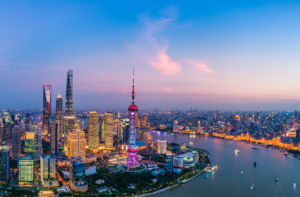The competition between Hong Kong and Singapore to attract high-net-worth investors (HNWIs) has intensified. Both cities have implemented strategic measures to lure wealthy individuals and their capital, leveraging their unique strengths and positioning themselves as premier investment destinations. This article delves into the dynamics of this competition, analyzing recent developments and the broader implications for Asian capital flows.
Hong Kong’s Relaunch of Investment Entrant Scheme
Hong Kong has long been a magnet for wealth, serving as a gateway to China for investors worldwide. Despite challenges, the city’s financial sector remains robust, with nearly half of Asia’s hedge fund managers based there, according to Preqin data. To attract more HNWIs, the Hong Kong government has decided to revive its “Capital Investment Entrant Scheme,” which was paused in 2015. The investment threshold has been raised to HK$30 million, and real estate has been reintroduced as a crucial part of the investment portfolio. This move not only aims to attract fresh capital but also to stimulate the real estate market.
The scheme’s relaunch is expected to bring in an estimated HK$120 billion every year, signaling Hong Kong’s confidence in its competitive edge over similar programs in Singapore. The government has expressed optimism about Hong Kong’s position, citing its comprehensive support and promising prospects for investors seeking a financial haven and a place to grow and thrive.
Singapore’s Strategic Play
On the other hand, Singapore has been becoming a safe harbor for Chinese wealth, attracting many of China’s millionaires, as Forbes recently highlighted. The city-state has raised the bar with its “Global Investor Programme” (GIP), increasing the investment threshold to S$10 million. This adjustment is part of Singapore’s strategy to manage the influx of wealth and its impact on local markets, ensuring sustainable growth. Despite tightening the requirements, the demand for the GIP remains high, with application queues extending significantly.
Also, Singapore’s proactive approach to establishing itself as a hub for family offices predates Hong Kong’s recent efforts. With over 1,500 family offices already established, including a notable percentage from Mainland China, Singapore demonstrates its appeal to ultra-high-net-worth individuals. The substantial investments underscore Singapore’s effectiveness in attracting committed, long-term HNWI investors.

Employment Market and Investment Climate
Amid the pandemic, some investment bankers who had relocated to Singapore began returning to Hong Kong. Reports indicate that major financial institutions are reassigning staff back to the city, reflecting a reassessment of strategic priorities. About 33% of UBS’s over 20 Hong Kong-based employees relocated to other places have returned. This shift underscores Hong Kong’s irreplaceable role in the global banking sector despite the lure of Singapore’s diversified and expanding financial services landscape.
Hong Kong’s stock market, with a total capitalization significantly surpassing Singapore’s, remains a critical factor in its appeal to investors. Hong Kong’s stock market capitalization is approximately US$5 trillion, more than 12 times that of Singapore’s US$400 billion. Singapore’s initial public offering (IPO) raised less than US$20 million this year, a 95% year-on-year decrease. In contrast, Hong Kong’s IPO raised US$3 billion, although it was still down 68% from the previous year.
However, both cities’ cost of living and real estate prices are converging, with Singapore’s hot property market driving up rental costs. Despite this, financial professionals in Hong Kong often enjoy higher incomes, adding another layer to the decision-making process for potential investors weighing their options between these two financial hubs.
HNWI Investors’ Globalization of Capital
The globalization of capital is witnessing a new chapter as Hong Kong and Singapore refine their strategies to attract high-net-worth investors. As investors seek optimal locales for their assets, the competition between Hong Kong and Singapore underscores a broader trend: HNWIs’ pursuit of global diversification. The strategic adjustments made by these financial centers not only reflect their individual economic goals but also their responses to the evolving landscape of international wealth management.
Wang Jingbo, co-founder, chairman, and CEO of Noah Holdings, a leading Chinese wealth management firm, emphasizes this trend, projecting that the pursuit of global asset allocation by Chinese HNWIs is likely to dominate the next two to three decades. This shift is propelled by the desire for diversification, security, and growth opportunities beyond the Chinese mainland, reflecting a broader trend of wealth globalization and the increasing sophistication of Chinese investors.
Noah Holdings advises investors to conduct thorough reviews and adjust their strategic asset allocations. This includes assessing the fundamental safety of various investment products, adjusting core portfolio allocations, and employing multi-strategy investment combinations to foster growth and resilience. This approach aims to create “antifragile” and correctable strategic and tactical asset allocations.
According to research by CITIC Prudential Life, Chinese HNWIs are expected to increase their investments over the next three years. The top three investment choices among them are stocks (17.9%), followed by gold (14.3%), and bank deposits (14.3%). Hong Kong (23%) is seen as the top investment destination abroad, with significantly higher numbers than Singapore (14%), Tokyo (11%), and London (9%). This indicates a strategic shift towards investment diversification while maintaining a focus on global asset safety and growth potential.
In conclusion, the competition between Hong Kong and Singapore to attract HNWIs is emblematic of the larger dynamics in the global economy. Each city’s unique offerings, from regulatory environments to lifestyle perks, play a crucial role in their appeal. As the world’s wealthy look for safe havens and lucrative investment opportunities, the strategies employed by these two financial hubs will continue to evolve, shaping the future of global capital flows and investment patterns.




